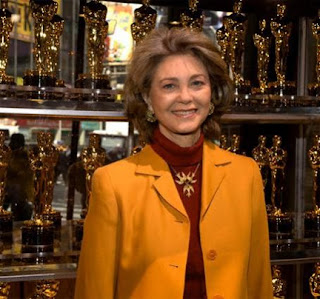Byron Janis, world class pianist and legendary musician, turned 89 this week (March 24) and what do you think he did to celebrate, he released his newest classical album of his never before heard live performances.
Now Byron has long denied the many pains and problems of aging and he has personally no clue what retirement might mean. How many of you spent the weeks before your 89th birthday in the studio editing and mastering an album of your greatest live performances?
Well the Wall Street Journal broke the news of the project in a story on the 22nd that included the following excerpts.
A Classical Maven Who Can Really Swing
By : TERRY TEACHOUT
March 22, 2017
4:57 p.m. ET
Byron Janis, who turns 89 this week, was one of what Gary Graffman, his
colleague and contemporary, called the OYAPs—the great generation of
“Outstanding Young American Pianists,” as they were customarily described by
journalists, who crowded the concert halls of the world in the years
immediately following World War II.Mr. Janis’s musical interests have long ranged beyond the classics. Out Friday, “Byron Janis Live: On Tour” (Janis Eleven Enterprises), a collection of previously unissued live performances of pieces by Chopin, Haydn and Liszt that were recorded between 1979 and 1999, also includes solo-piano arrangements of several of Mr. Janis’ songs, thus reminding us that he is also a highly accomplished popular songwriter who, among other surprising things, has written the score for a musical version of “The Hunchback of Notre Dame.”
The biggest surprise, however, is the encore, a piano duet called “By and Cy—More Paganini Variations.” On this track, Mr. Janis and Cy Coleman, a classically trained Broadway composer who wrote the score for “Sweet Charity” but started out as a jazz pianist of note, join forces to improvise on Paganini’s A Minor Caprice, the familiar solo-violin piece on which Brahms and Rachmaninoff produced their own sets of variations.
--------------------------------------------------
So if this is how your life started how would you feel?
Born in Pittsburgh
Not a bad start in life for a kid I suspect. But what was the price tag for such an interesting life? Well, we best give you an overview of the rest of his life before I can tell you the rest of the story.
Byron was one of the greatest concert pianists of the 20th century.
He never got to play his beloved game of baseball.
At age 18 he was the youngest recording artist signed by RCA Victor Records.
At age 20 he made his widely acclaimed Carnegie Hall debut.
He undertook international diplomatic missions for two American presidents.
In fact two presidents asked him to perform in the White House three times (Kennedy twice and Ford).
Unfortunately the Gary Powers U2 incident and Bay of Pigs disrupted the concerts.
Twice he did play for President Ronald and Nancy Reagan.
Byron was the last American artist to play in Cuba before the Castro revolution.
He was also the first to play in Cuba at the request of the Castro administration.
His high energy performances in every major concert hall in the world dazzled the audiences.
At the same time he was hiding a serious case of psoriatic arthritis that was first diagnosed in both hands in the middle of his career.
Still his powerful concerts gave a whole new meaning to Chopin, Schumann, Tchaikovsky, Liszt, Rachmaninoff, and all the greatest composers in classical history.
Byron is not just an American legend, nor a world class pianist, he is the embodiment of what happens when the spirit, heart, and soul have merged into the body of one of hardest working, creative, and energetic people walking the Earth.
His life was full of heartache and triumph but he never gave up and to this day never quit. Even after he could no longer meet his concert standards he shifted his interest to composing, teaching, communicating with young talent, and inspiring untold thousands of classical performers throughout the world.
You owe it to yourself to check out Byron and order his latest album. You can find him at the web site below. His story is far more extensive, diverse, and compelling than I have hinted but this is really just a birthday card not an autobiography.
Did I mention he married Maria Cooper, the daughter of film icon Gary Cooper?
So....
Happy Birthday Byron and may you never cease to amaze us.
.
















